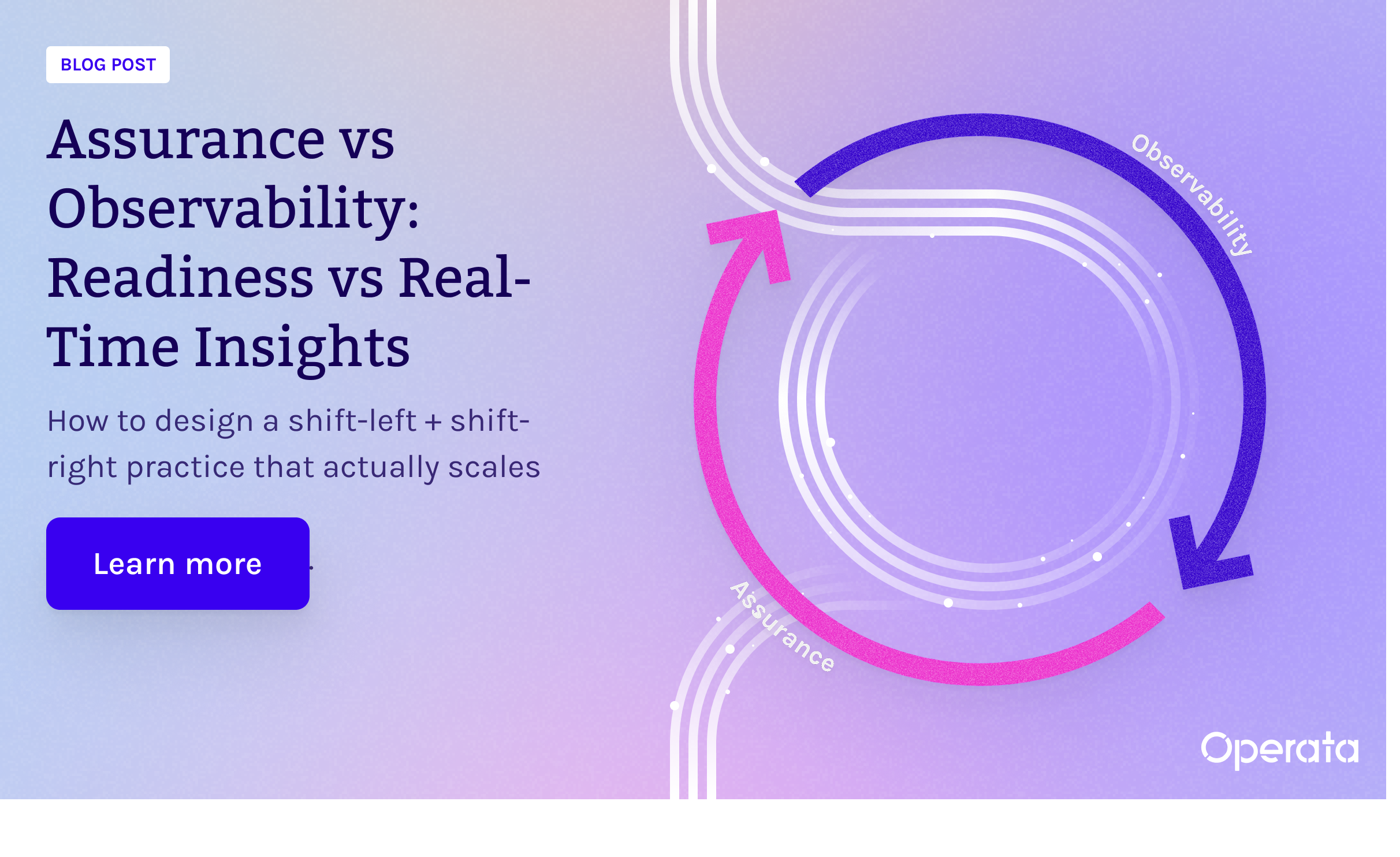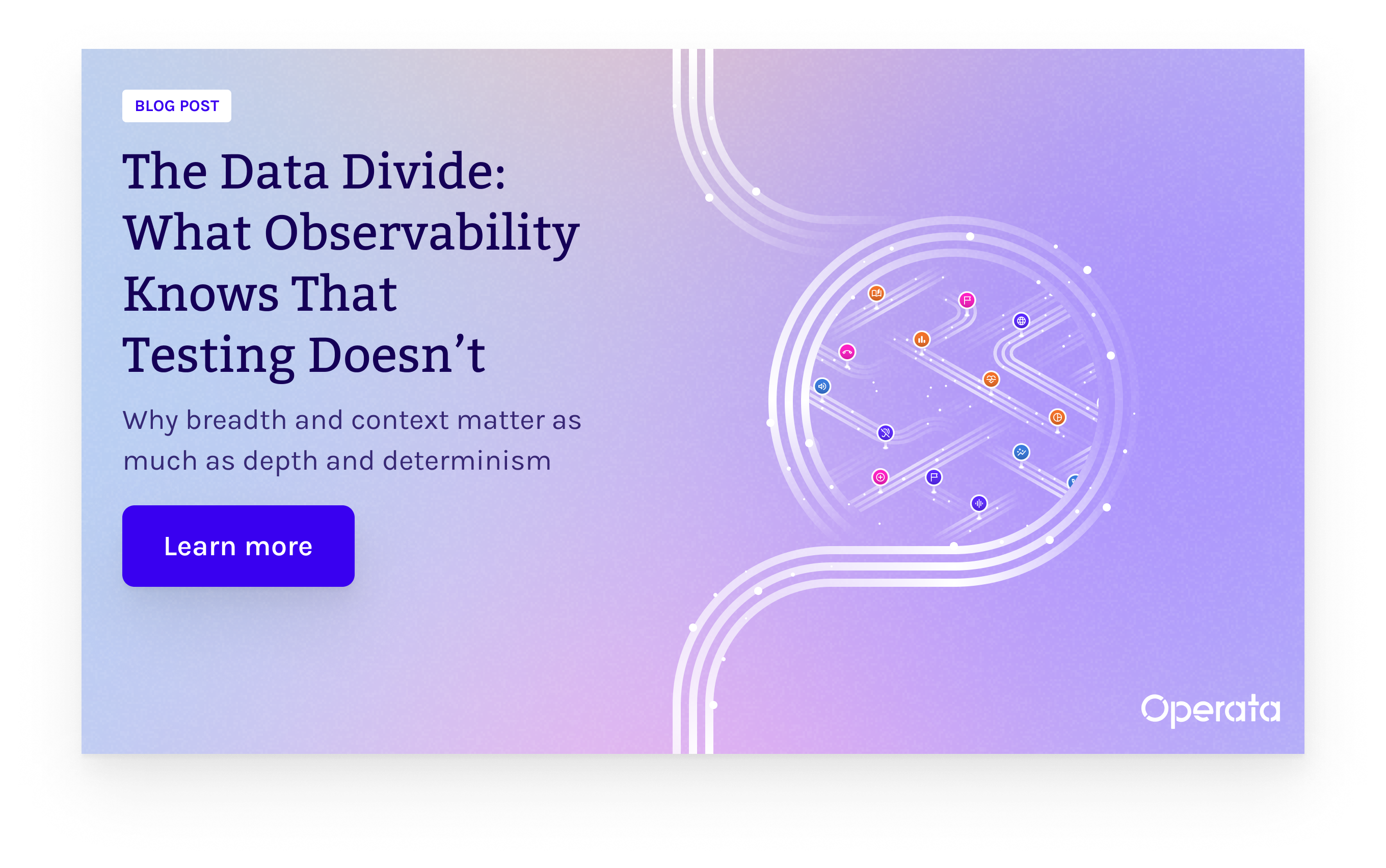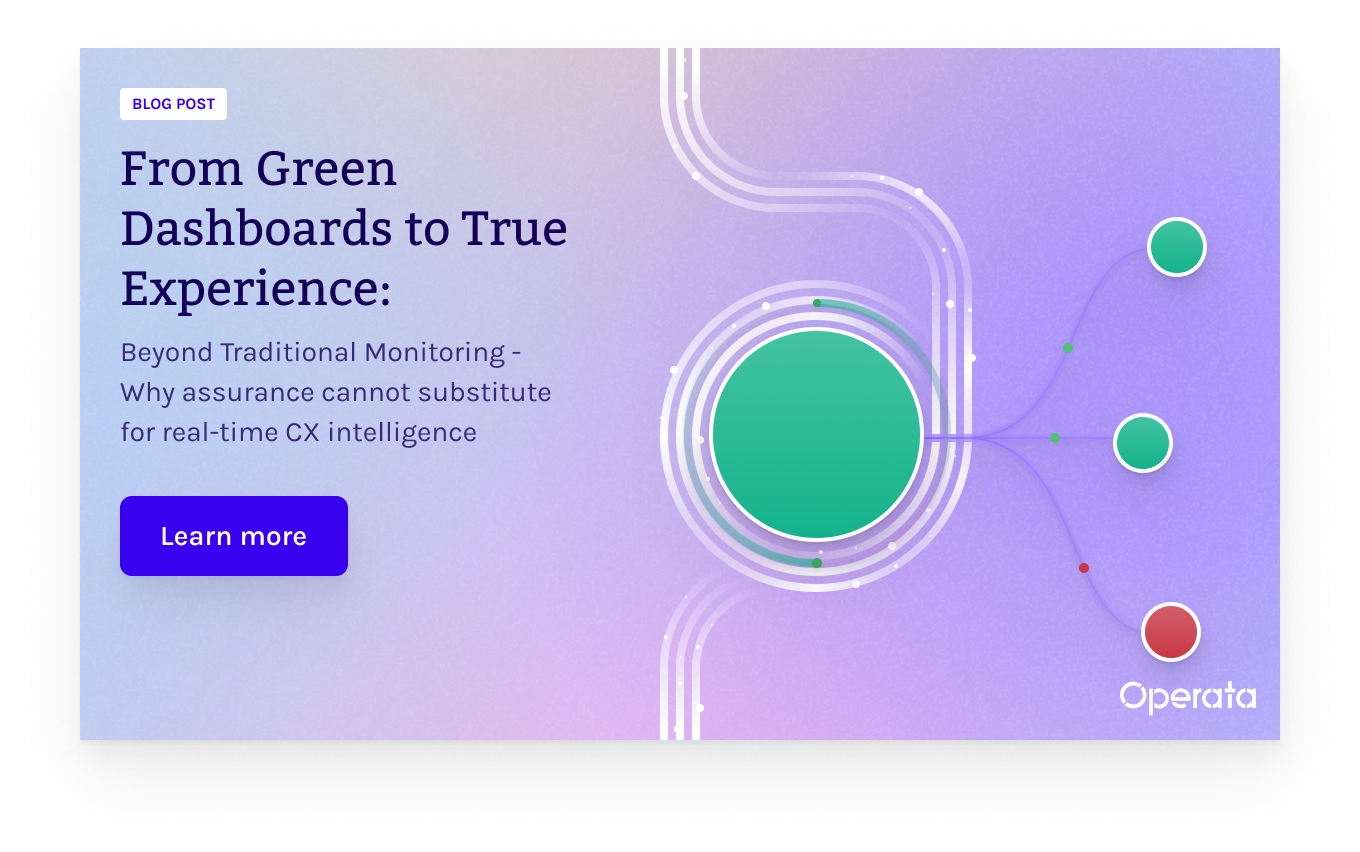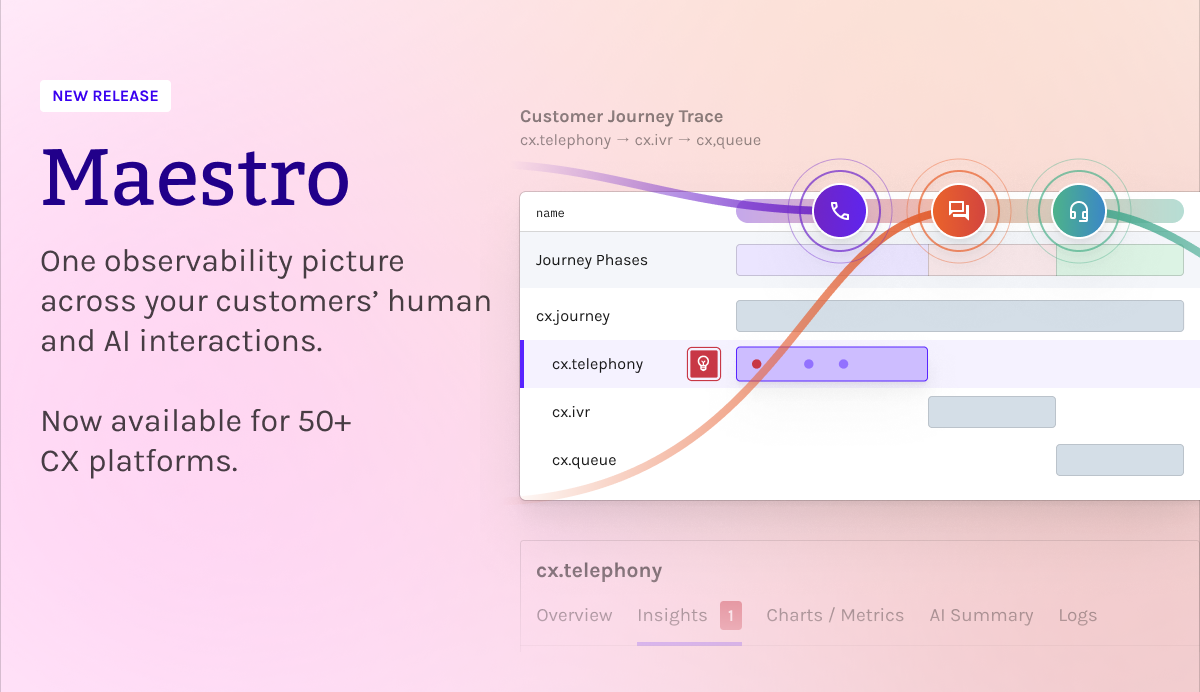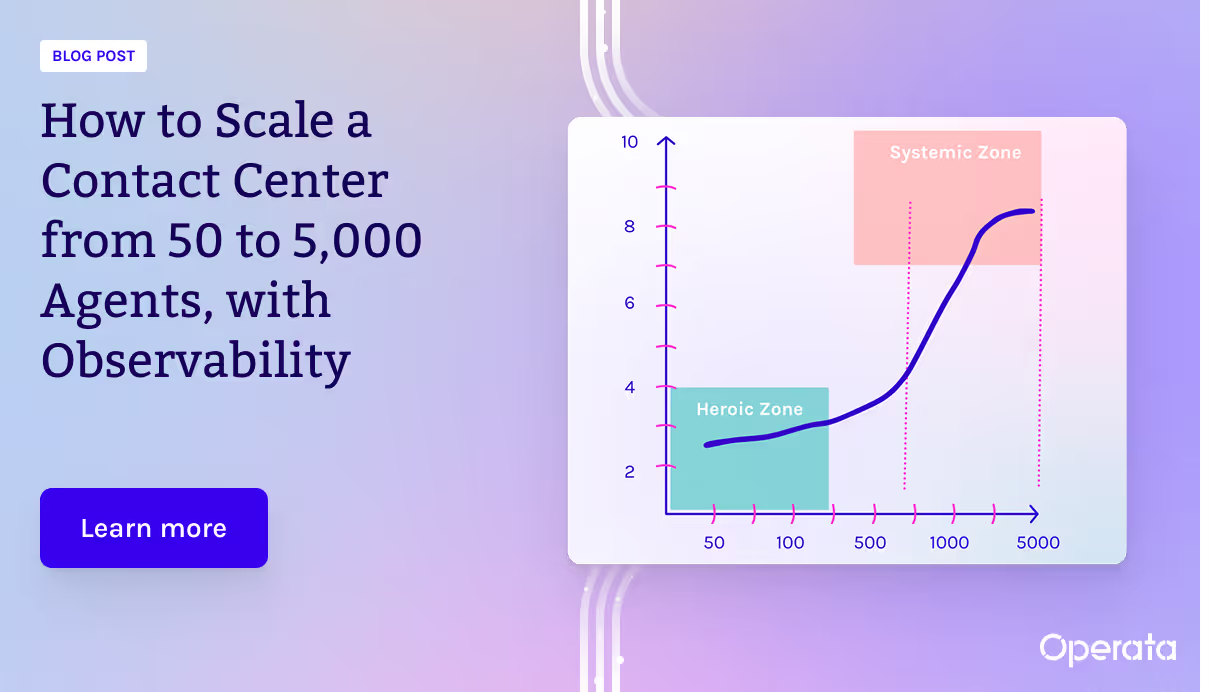TL;DR - Assurance (pre-deploy testing and synthetic checks) gives you readiness; observability (continuous production telemetry) gives you Real-time actionable insight. The best contact center operations use both in a tight feedback loop: discover in production, turn discoveries into deterministic tests, prevent regressions, and validate fixes in live traffic. Operata supplies the telemetry and assurance primitives needed to close this loop with actionable context: timestamps, call IDs, agent telemetry and business outcomes, so your teams can ship faster with less risk .
Prevention and detection: two sides of the operational coin
In mature DevOps and SRE practices, prevention (shift-left) and detection (shift-right) are complementary. For contact centers, those disciplines map to assurance and observability:
- Assurance = Readiness. Prove a change won’t break expected flows before it reaches customers.
- Observability = Real-time. Continuously watch live interactions to find the problems tests missed.
Both are necessary. The art is in making them feed each other so that the unknown becomes known, and then prevented.
Assurance = Readiness
Assurance covers the pre-deployment work that keeps change safe: load tests, regression suites, and continuous synthetic checks. These activities validate expected behavior under controlled conditions and are indispensable for migrations, major releases, and CI/CD gating. Assurance answers the engineering question: “Is this change safe to ship?” and without it, the release risk explodes.
But assurance has limits:
- It’s scripted and deterministic by design.
- It validates known scenarios, not unknown interactions.
- It often runs in staging or with synthetic traffic that can differ from production reality.
For these reasons, assurance should be treated as a necessary safety harness, not the only line of defense.
Observability = Real-Time Actionable Insights
Observability is the operational capability to monitor live traffic, correlate signals across layers, and answer the question: “Is the real system delivering a great experience for actual customers?” It measures agent environments, audio quality, contact flow events, AI outputs and business KPIs continuously.
Where assurance prevents known issues, observability discovers the unknown ones: emergent failure modes, vendor throttles, regional carrier problems, or AI model drift. Modern observability is not simply logs and metrics; it’s high-magnitude, per-call telemetry that lets you prioritize fixes by customer impact (not by metric severity).
The shift-left + shift-right feedback loop
Design your operations as a continuous loop:
- Pre-deploy (Assurance): QA validates changes with automated tests and gates deployments.
- Post-deploy (Observability): Production is monitored for anomalies across every customer interaction.
- Feedback (Closing the loop): Observability surfaces new failure patterns; QA codifies those patterns into regression tests.
- Repeat: The improved test suite prevents recurrence, and observability verifies the fix in the wild.
This shift-left/shift-right loop converts emergent production problems into deterministic test cases. Over time it progressively shrinks the unknowns in your system and elevates organizational confidence in rapid change.
Operational example: make the loop real
Imagine observability shows that a growing cluster of calls in Queue B keep hitting the same desktop error and agents end up taking much longer to resolve those interactions. With correlated telemetry, Ops sees the pattern lines up with the agent desktop struggling to load one specific tool whenever traffic climbs. QA builds a small synthetic check that repeatedly opens that tool under heavy load. Engineering then trims the startup sequence and fixes a slow dependency. Observability confirms the error rate drops and handle time settles back to normal. The whole incident becomes a reusable test that stops the issue from returning instead of leaving everyone chasing it again.
Operata’s role: telemetry + assurance close the loop
Operata provides the end-to-end signals and lightweight assurance features that make the feedback loop practical:
- Contextual telemetry: agent endpoint signals, per-call audio metrics and CCaaS events tied to call IDs.
- Actionable evidence: timestamps, agent telemetry and business outcomes that let IT and Ops triage quickly.
- Assurance primitives: simple synthetic checks and test-generation patterns so discoveries become regression tests and CI gates.
Put simply, Operata is the platform that lets teams discover issues in production and convert them into deterministic tests, making changes safer and operations more proactive.
Business benefits: faster, safer, smarter
When assurance and observability are integrated:
- MTTR falls because teams diagnose with correlated evidence.
- Operational ROI rises because fixes are prioritized by customer impact.
- Change velocity increases because tests and production validation work together to reduce risk.
- AI governance improves via continuous production validation and targeted test creation.
Roadmap: how to start
- Keep testing. Preserve your assurance suite for pre-deploy safety.
- Instrument production. Deploy agent collectors and CCaaS integration for per-call telemetry.
- Correlate automatically. Tie technical signals to customers, queues and outcomes.
- Turn finds into tests. Automate conversion of observability discoveries into regression cases.
- Automate playbooks. Reduce toil and speed response with playbooks driven by observability.
Assurance and observability are not competing investments; they’re complementary disciplines that together power a resilient, fast-moving contact center. Build a shift-left + shift-right practice that learns from production and prevents recurrence. Operata gives you the telemetry, conversion patterns and operational tooling to close the loop. Get in touch and we’ll map your current test suites to the observability signals that matter most.
Q: Isn’t assurance enough if my tests are comprehensive?
A: No — tests validate known scenarios. Observability finds unknown production behaviors (regional failures, agent endpoint faults, AI drift) and converts them into new tests.
Q: How quickly should observability feed tests?
A: As fast as possible. Operational best practice is to convert high-impact discoveries into regression tests and CI gates within a single sprint cycle.
Q: What telemetry matters most for closing the loop?
A: Per-call audio metrics, agent device telemetry, CCaaS events, AI signals, and business outcomes (CSAT, abandon rate, handle time).
